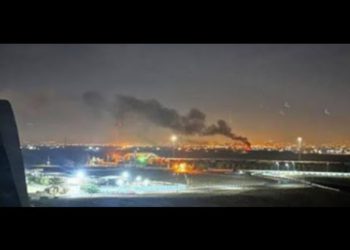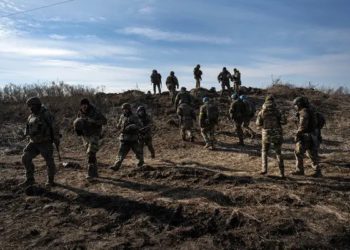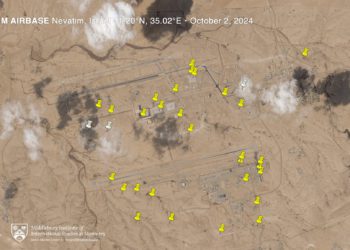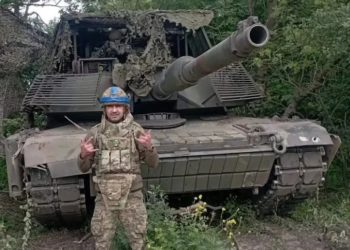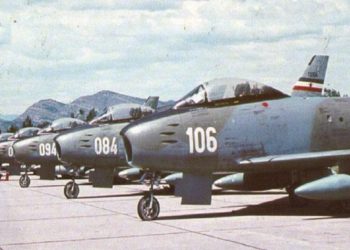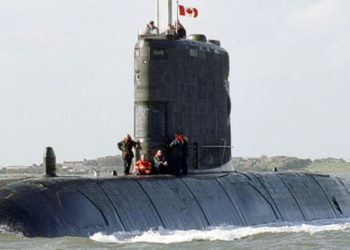In 1945, the United States dropped two atomic bombs on the nation of Japan in what is seen as one of the most controversial decisions of modern warfare. Within the space of one week, the cities of Hiroshima and Nagasaki were reduced to rubble as “Little Boy” and “Fat Man” were dropped on these metropolitan centers. Killing almost a quarter of a million people instantly, more would die in the weeks and months to come due to the side effects of being exposed to high amounts of radiation. While the survivors would be left with permanent reminders, both physically and mentally, of those horrible events.
Today the decision to use of the Atomic Bombs over Japan is a rather touchy subject, as there are those who believe that the use of these weapons was, for a lack of a better term, overkill and that the U.S. should not have used such devices on what were largely seen as civilian targets. While there are those who say that the use of the Atomic Bombs were in fact, justified and that Japan was guilty of doing far worse to civilian populations all over Asia and the Pacific. But in this debate there is a a third voice that neither supports nor condemns the American’s decision to deploy these weapons to end the war, as they see the decision to use the bombs as the only option the U.S. and the Allies had to guarantee Japan’s surrender.
The genesis of America’s nuclear program came when German Scientist discovered nuclear fission and its potential to create an Atomic device in 1938. Numerous scientist who had fled Nazi Germany feared that with this new information at hand, the Nazi government would attempt to develop an nuclear weapon of some kind. A weapon which they believed the Nazi’s would not hesitate to use if war were to break out. This fear resulted in the drafting of the Enstein-Szilard letter, which was signed by Albert Enstine himself and sent to U.S. President Roosevelt, a letter which urged the United States to begin development of their own Atomic Weapons before Germany did.
With the assistance of both Canada and the United Kingdom, “The Manhattan Project” as it was called, began in 1942. A year which saw the USA now fighting a war on two fronts against two major world powers, but by 1945 World War 2 was coming into it’s final months. Germany was no longer capable of developing a nuclear weapon, as Nazi forces were now being pushed back by both the Western Allies, and the massive Soviet Red Army. While in the Pacific, the U.S. Military and its allies had pushed Japanese Imperial forces back to the home islands and were now battling it out on Japanese soil

By May of 1945, Adolf Hitler was dead and the war in Europe was effectively over, leaving only Japan to fight on in what was quickly becoming a war of attrition. During the Battles of both Iwo Jima and later in Okinawa, Japan unleashed a horrible new tactic in the form of the Kamikaze (Divine Wind) in which Japanese pilots would fly their planes, loaded with explosives and crash them into allied ships. Similar attacks had been conducted in late 1944, but as the Americans began to close in, these suicide attacks became more and more vicious. Especially during the Battle of Iwo Jima, where Kamikaze attacks killed thousands of allied sailors and either sank or damaged dozens of vessels.
But it would be the Battle for Okinawa which would end up being one of the bloodiest battles of the Pacific war with over 200,000 dead, the majority of which were Okinawan civilians who were caught in the fighting. With these losses in mind, it was not long before the Allied Command and the Americans in particular, began to question just if it would have been feasible to launch an land invasion of Japan itself. The invasions of both Iwo Jima and Okinawa was to give the allies access to air feilds which they could use to bomb Japan, as well as give them staging post for what looked like the inevitable invasion of the home islands.
The planned invasion code named “ Operation Downfall” was to take place in late 1945 with the invasion of Kyushu. Which in turn would become the staging point for the eventual invasion of Honshu taking place in 1946. It was believed that said invasion would have been the largest in modern history, with an estimated 6,000,000+ Allied Troops and the largest naval armada in history being assembled. But with the recent battle of Okinawa still fresh on the minds of Allied commanders and the Japanese showing that they were more than willing to launch devastating suicide attacks, an invasion of the home islands was beginning to look less and less feasible.

When the Allies landed in Kyushu not only would they have encountered an fanatical military force, but an population who may have been more than willing to die for their Emperor. Even if soldiers were ordered to avoid contact with civilians, there was really no telling what would happened if an armed Japanese man or woman attempted to engage landing forces and nothing was gonna stop a soldier or marine from defending himself. Not to mention that it was also believed that Japan, though starved of oil and other raw materials, still had access to hundreds of aircraft and there was no doubt in anyone’s mind that these aircraft would be deployed is massive Kamikaze attacks.
In all it was estimated that over a million allied troops would have either been killed or wounded by the time the operation came to an end, with 100,000 troops being needed every month to sustain the Allied push. There was no way to know just how many Japanese would have been killed in the process and it was believed that Japan would still not surrender even after such heavy losses. After years of fighting the world wanted a quick end to it all and after going over the numbers, there was really no option left.

On the morning of August 6th 1945, a B-29 Super Fortress named “Enola Gay” took off from Tinian, with a flight of aircraft to conduct what would become the first combat nuclear strike in history. Their target was the city of Hiroshima, which during the was a major industrial and military hub for Japan as the city was home to a number of military command centers. Up until this point, Hiroshima had been largely spared from American Bombers but that would soon change. At 8:15 AM, the people of Hiroshima heard the ominous sound of aircraft engines over head, many of which looked towards the sky just in time to see a small object falling towards the ground.
43 seconds later a massive mushroom cloud appeared over the city, as an explosion equivilent to 16 kiloton of TNT destroyed everything around it. Instantly killing an estimated 80,000 civilians and military personnel, and obliterating over 50% of Hiroshima. While many more would die in the coming weeks and months due to their injuries and effects of the radiation fall out. Three days later another B-29 named “Bockscar” took off to conduct another atomic strike, this time against the city of Kokura and with the Enola Gay providing weather reconnaissance to the other aircraft. But due to bad conditions over the city, Bockscar moved to its secondary target which was the city of Nagasaki.
Even though the bomb “Fat Man” was more powerful than the previous weapon known as “Little Boy”, Nagasaki was largely spared from destruction due to the bomb’s detonation in the Urakami Valley. Though 22,000 were instantly killed in the blast while more would follow in the coming days and weeks. But despite the unimaginable destruction caused by the two atomic bombs, there were still those in the Japanese military command who believed that Japan should still fight on and there was a short lived rebellion who attempted to silence the Japanese Emperor before he could annouce his decision to surrender to the Allies.
But on August 15th, Emperor Hirohito announced his intent to surrender and end the war to the Japanese people, while two days later he sent another message to all Japanese troops urging them to lay down their arms and admit defeat. 11 days after the Emperor’s message the occupation of Japan began when U.S personnel landed on Kanagawa, an occupation which would not fully end until 1972 when the U.S returned the Ryukyu islands.

In reality there is really no telling what could have been the outcome if the Atomic bombs were not used and the Allies had opted to invade. Would it have ended the war? Most likely, but would history justify the possible death toll which would have come out of it, military or otherwise? Although the justification of the use of Atomic Bombs will always continue to bring up debates for many years to come, there is still no denying that the use of such weapons did contribute to the capitulation of the Empire of Japan.
As well as serve as a reminder of how destructive war can be, and how all of us should work to prevent future conflicts of such scale from happening ever again.


